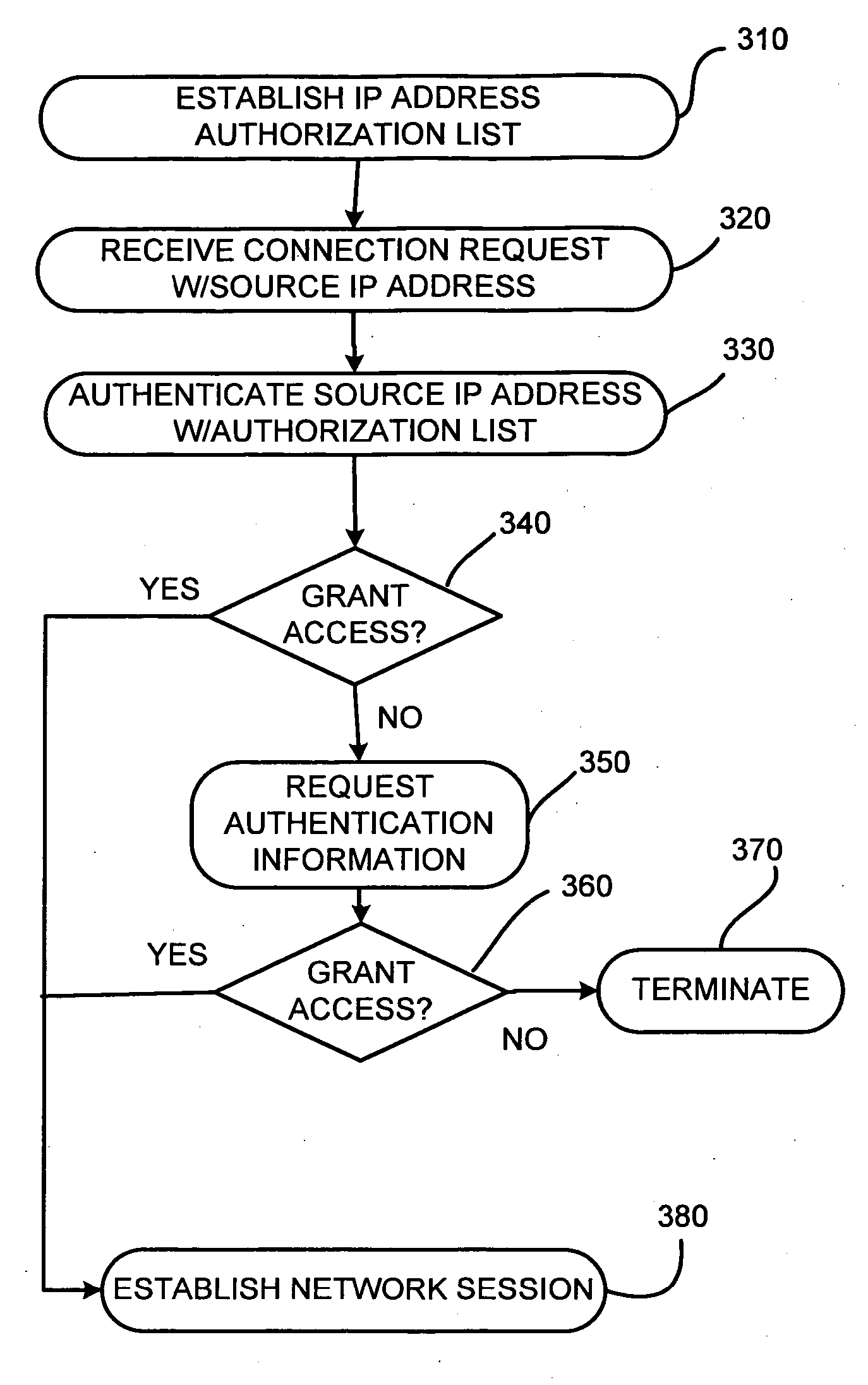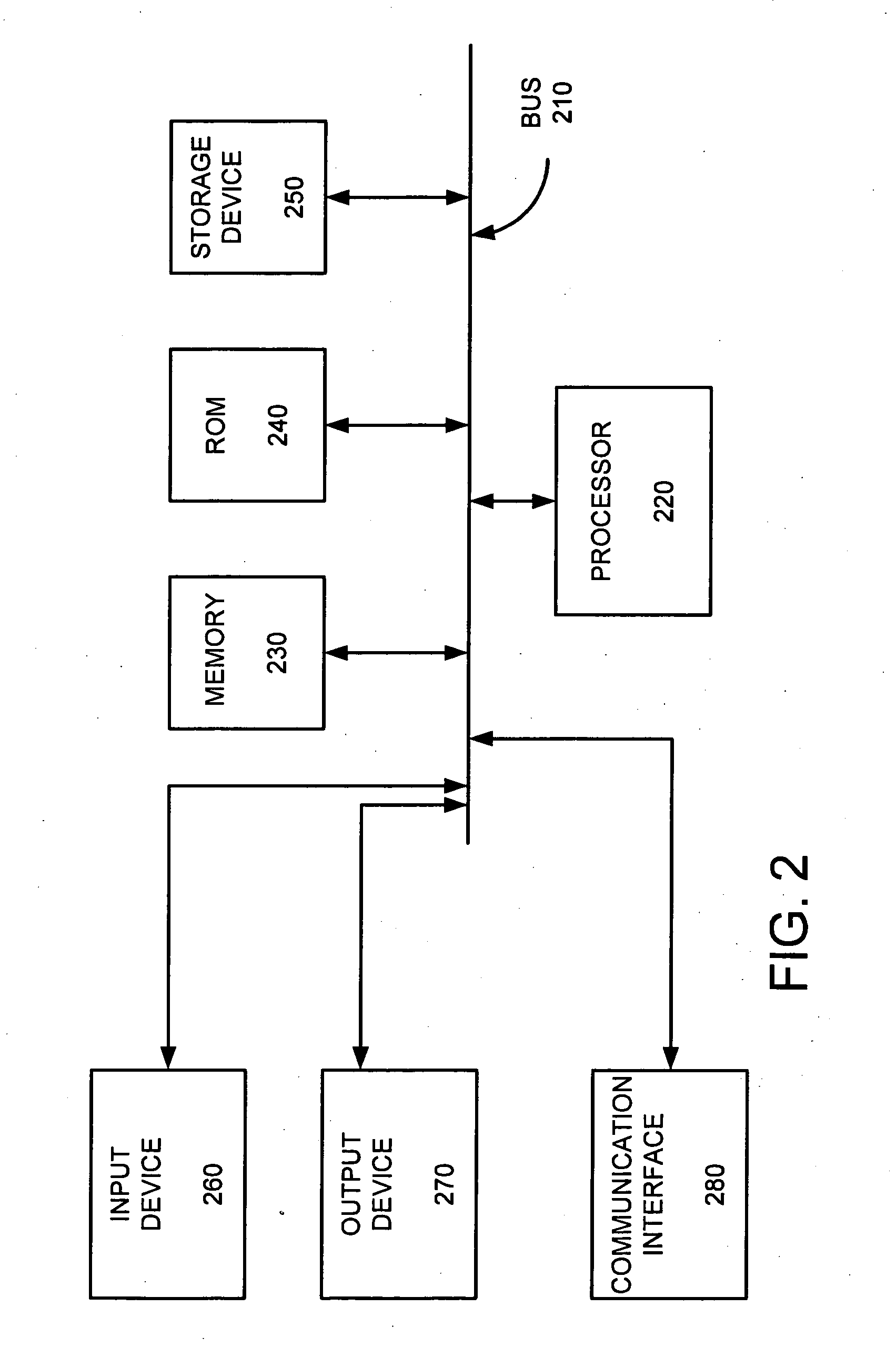Preventing fraudulent internet account access
a fraud prevention and internet account technology, applied in the field of computer network management, can solve the problems of insufficient existing account login processes alone, unauthorized or fraudulent access to online account services, and compromised network account protection
- Summary
- Abstract
- Description
- Claims
- Application Information
AI Technical Summary
Benefits of technology
Problems solved by technology
Method used
Image
Examples
example 1
[0040] In one exemplary implementation, illustrated in Ex. 1, a first co-owner of the account, network resource user 460a, uses a computer 410a (or another networked device (not shown)) that is networked on a corporate LAN 420a, for example, at his place of business, to transmit an access request to web site 470 associated with network resource provider 440. LAN 420a is a Class C network that has an IP address having a 24 bit network prefix or segment, e.g., 192.34.242, and computer 410a has an assigned specific host or node number (e.g., 118). According to one implementation, where network resource user 460a intends to access the account at web site 470 only from computer 410a (e.g., his assigned computer), the authorization list may include the IP address, 192.34.242.118. In another implementation, where network resource user 460a intends to access the account from one or more other computers on LAN 420a, the individual IP address(es) may be included in the authorization list or, ...
example 2
[0041] In another exemplary implementation, illustrated in Ex. 2, the IP address of computer 410a is provisionally included in the authorization list. That is, the IP address, 192.34.242.118, allocated by network address identifier provider 450, is authorized only during certain periods (e.g., on business days, during normal business operating hours, etc.). When network resource user 460a attempts to use computer 410a to access the account at a time outside of the authorized period (e.g., on a weekend, etc.), authenticator 480 initially determines that network resource user 460a is unauthorized and communicates to network resource provider 440 that authenticity has not been established. Thus, the access request is rejected and connectivity is not allowed. A request denied message is sent to computer 410a. In one implementation, network resource user 460a may then provide secondary verification information that is verified against the related verification information maintained by or...
example 3
[0042] In another exemplary implementation, illustrated in Ex. 3, a second co-owner of the account, network resource user 460b, uses a computer 410b from her home that connects to an ISP network 420b, to transmit an access request to web site 470 associated with network resource provider 440. ISP network 420b is a Class B network that has an IP address having a 16 bit network prefix, e.g., 168.233, and computer 410b may have host number ranging from 0.0-255.255 that is dynamically allocated by network address identifier provider 450, for example, each time computer 410b initiates a connection to network 430. According to one implementation, the authorization list may include the IP address range, 168.233.0.0-168.233.255.255. According to another implementation, ISP network 420b may be subnetted, i.e., the single network may be split into multiple virtual networks. For example, ISP network 420b may include an associated group of networked devices (not shown) that includes computer 41...
PUM
 Login to View More
Login to View More Abstract
Description
Claims
Application Information
 Login to View More
Login to View More - R&D
- Intellectual Property
- Life Sciences
- Materials
- Tech Scout
- Unparalleled Data Quality
- Higher Quality Content
- 60% Fewer Hallucinations
Browse by: Latest US Patents, China's latest patents, Technical Efficacy Thesaurus, Application Domain, Technology Topic, Popular Technical Reports.
© 2025 PatSnap. All rights reserved.Legal|Privacy policy|Modern Slavery Act Transparency Statement|Sitemap|About US| Contact US: help@patsnap.com



